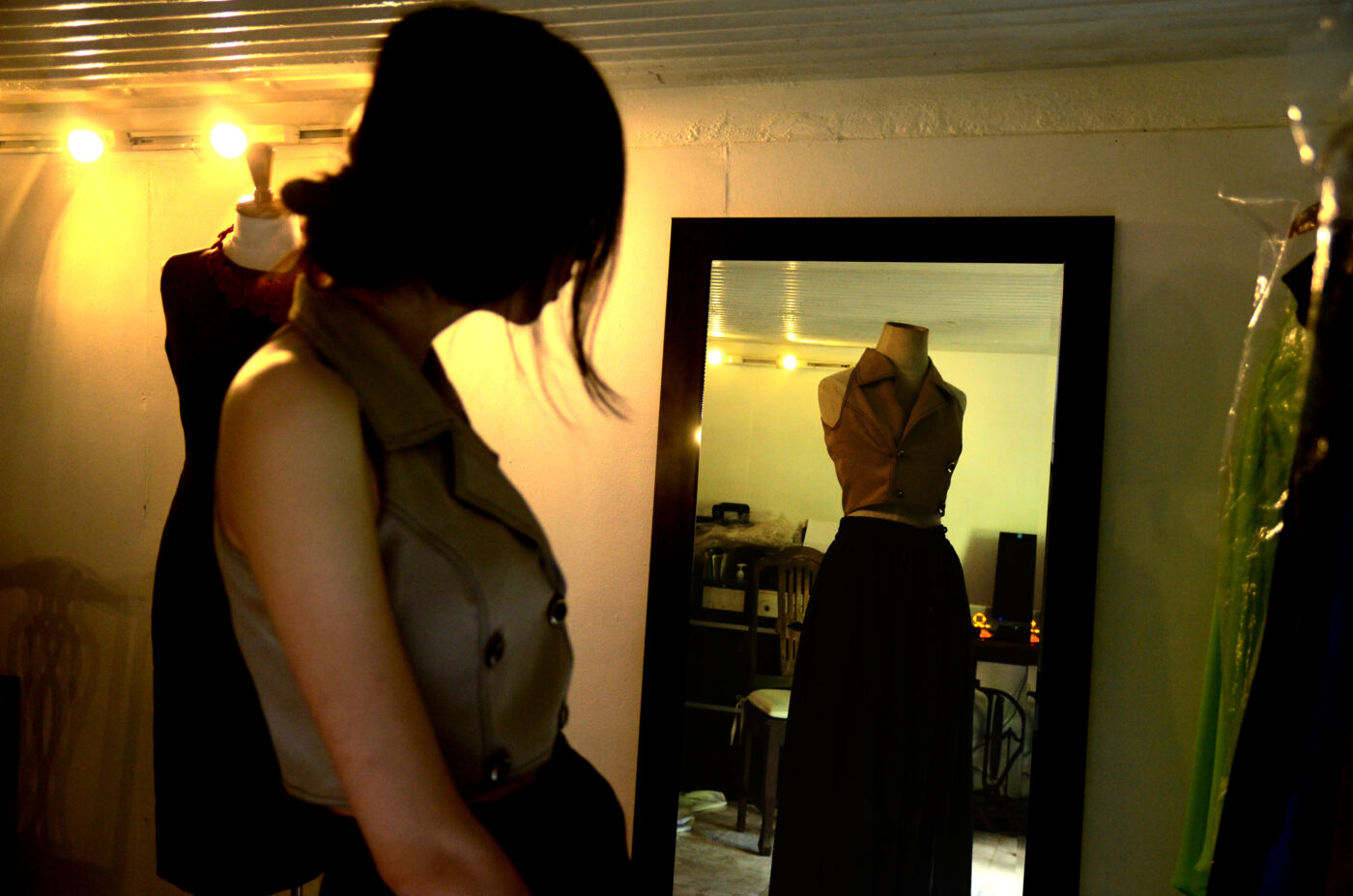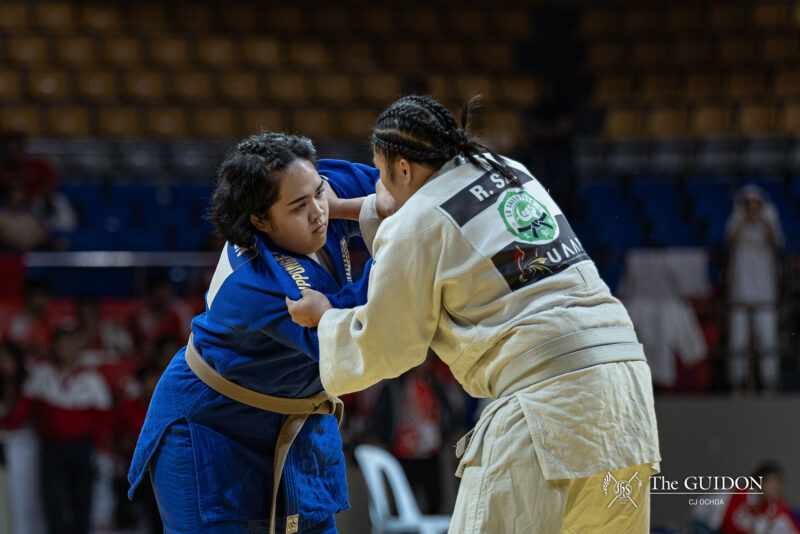The ancient world has its myths, and we have ours: The fashion model.
The most specific mythic figure in the modern world is the fashion model, the standard bearer of beauty. It is tasked with making the claim that beauty is attainable for the right price believable. But the model’s mythology is not based on the model itself, not its achievements, its consciousness, its person, but instead by its—in most cases—innate ability to meet the manufactured standards of beauty today.
The trade is the trick
Next to beautiful, the adjective that most easily attaches itself to the modeling profession is glamorous. But while glamour is something most image-conscious people strive for, there is a tendency to forget that glamour is, by definition, only a trick. The reality of modeling work, as shown by the countless reality television shows on offer today, is that it is work.
Hye Won Jang (BS ME ‘12) has become one of the pre-eminent models on the Philippine fashion scene. Regularly included on lists of the country’s most beautiful women, she’s worked photo shoots and runway shows from Mandaluyong to Dubai—and it’s busy work. “There was a week where every single day, there was a fashion show. Call time was 8 AM, the show was at 7 PM. The next day, call time was 8 AM again,” Jang says, recounting her first two months after graduating from the Ateneo.
Jang has done a number of runway shows, which have very different demands from photo shoots. For example, hair and makeup for most runway shows is done only once, unlike photo shoots where it is regularly changed. Models participating in most runway shows are also required to learn and rehearse blocking and walking paths; keeping the show running at the appropriate pace can be an exhilarating experience. “The adrenaline is really what I like when you’re on the runway because you just feel like you’re in the moment,” Jang explains.
Working photo shoots is something all models end up doing at some point, but each and every shoot is looking for something different. Catalog shoots are for showcasing apparel companies’ latest product lines. Editorial shoots, on the other hand, are meant to explore the most current trends or styles. Finally, commercial shoots become print or TV ads for the products on offer by various companies.
Kelsey Merrit, a communication sophomore and veteran print model, says that she likes to get through being photographed at shoots as fast as possible: “I like throwing a lot of poses and finishing a layout in more or less two minutes if possible. I lose my momentum when I don’t work fast.”
And then there is the case of the Fit Model. Usually the least seen but the best paid, the Fit Model usually works directly for designers instead of being contracted to intermediary modeling agencies. The Fit Model’s primary purpose is to serve as a template for the fit of the designer’s clothes as well as to test clothing. The work requires the model to strictly maintain his or her figure usually through rigorous dieting and fitness regimens.
World mythology
America’s Next Top Model, the reality show-cum-talent search hosted by supermodel Tyra Banks, has portrayed photo shoots and runway shows as the model’s main work. While this holds true for the most part, the hugely popular show tends to oversimplify the demands that the multi-billion dollar fashion industry makes of its most prominent laborers.
Apart from being one of the most demanding professions today, modeling is also one of the most cross-cultural. The work is largely the same throughout the world because of just how large the fashion industry is. Merrit was recently scouted by Wilhelmina Models to work under contract in New York City. “I wasn’t ambitious. I dreamt of modeling in New York but I never actually thought I could or would be able to,” she explains. But in an industry that’s reach extends to even the most remote regions of the world, a talent like Merrit working in New York was almost a forgone conclusion.
In the end, modeling work consists of following the instructions of photographers, creative directors, designers, fashion show directors and corporate clients for grueling and irregular hours, while offering little job stability to small and middle name models. But as with all jobs, it does pay. When asked what her favorite thing about modeling is, Merrit answers with a laugh: “Getting my paycheck afterwards!” All professional models charge a talent fee, around 30% of which goes to the modelling agencies who act as intermediaries between the models and their clients.
For freelance models like Jang, who aren’t signed exclusively to an agency, getting paid can get tricky: Some clients don’t pay, or don’t pay the right rate. This is where organizations like the Professional Models Association of the Philippines (PMAP) come in. PMAP works like a union, charging a monthly membership fee for “reasonable working hours and standardized compensation,” according to their website.
For the truly top models, however, the work does offer excellent pay as well as opportunities for travel and avenues for networking with the biggest names in the fashion industry and conceivably even beyond.
Myth material
Modeling work requires incredible patience and a tremendous work ethic, like most professions do, as well as the confidence and optimism that the model can book as many jobs as possible. But the most fundamental element to booking any jobs is also the model’s greatest asset: Its look.
When clients hold castings, it is not uncommon for them to specify that the casting is for models of a certain ethnicity, height or body type only. Hiring workers based on these criteria would be completely unacceptable in nearly all other fields, but in the fashion industry; clients aren’t just hiring workers–they’re shopping for a look. “Some people are very loud and frank. They will tell you what they don’t like about you: Your face. And you just have to accept that, and have a strong ground and not get moved by those things,” Jang explains. “You can’t expect all clients to like you because you have a certain look, and that look fits certain jobs, not every single job.”
The fact of the matter is that all the glitzy ad campaigns and photo shoots are almost never dreamed up around the model as a person but instead around a look. The model just so happens to be able to carry that look. Most people venerate models for their beauty, but it is not the model itself that makes its own beauty venerable. Instead, it is the mythmakers with the necessary financial muscle and media influence.
Today, the most beautiful models aren’t classically beautiful. Some of the most famous and “beautiful” models are gap-toothed, like Lara Stone, or possess disproportionately long limbs, like Sam Humphries. It speaks to a cultural mindset that has associated beauty with individuality. In a world that promises that your appearance can determined entirely by you, the model is the template, the starting point for the person you should aspire to be.
The model promises that identity is inextricably linked to appearance, and herein lies the model’s greatest irony. The model, as a person, cannot define itself by its appearance. “Your look is different from your self,” Jang explains.
The model’s look is the currency with which it pays for its mythology. That mythology in turn shrouds all that is ordinary about the model. But in a world where information on anything and everything is so readily available, the model’s mythic status is only maintained by those with the opportunity to profit from the story.
Ultimately, the model is merely an image, the mirage of someone else’s dream. “In terms of photos and shows, there’s a particular person that the designer sees in you, and that’s what you have to be in the shoots and the shows. You can’t just be yourself,” Jang says.







